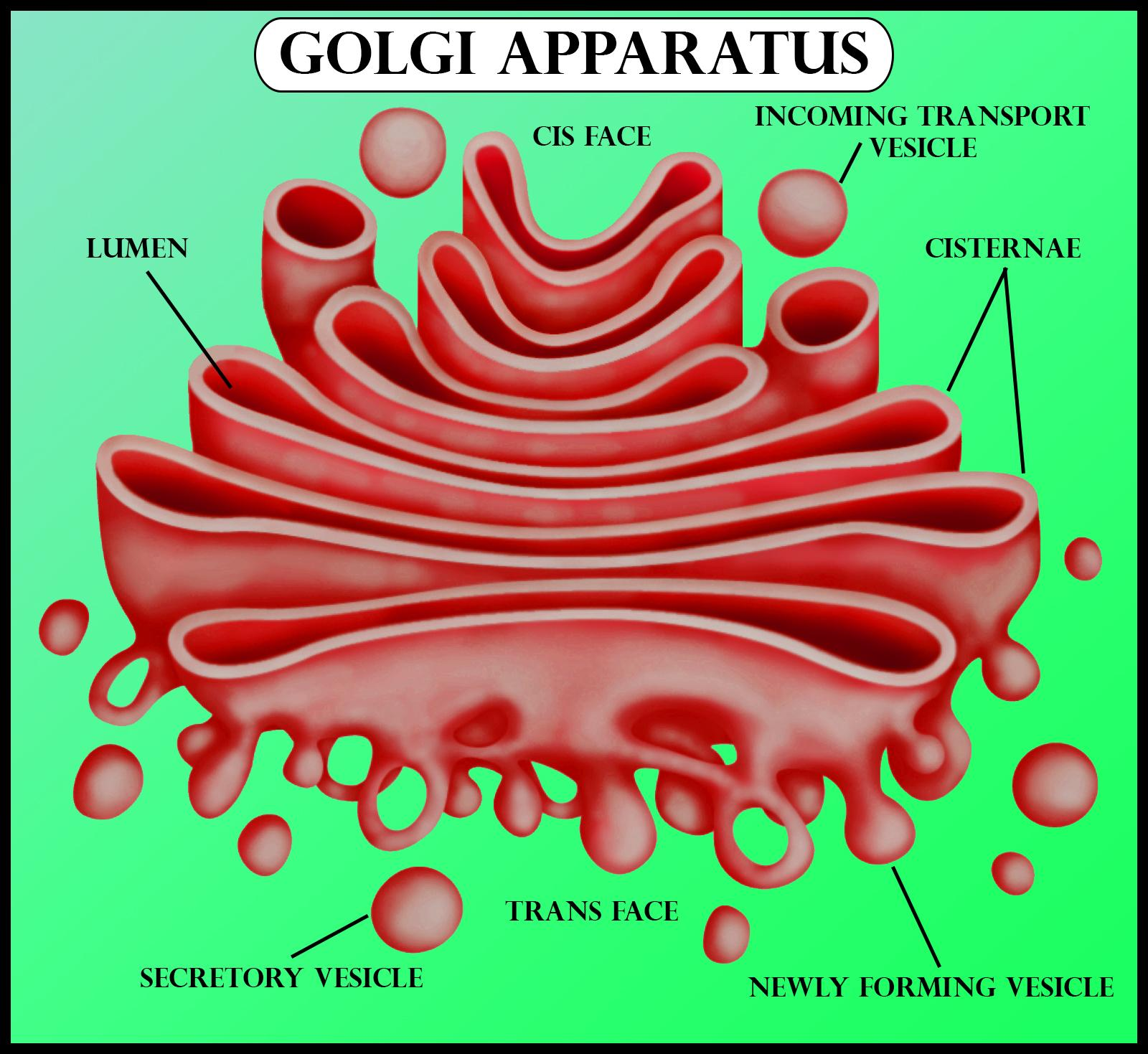
The number of Golgi bodies during cell division of plants and animals
(a) Increases
(b) Decreases
(c) Remains constant
(d) Increases many folds
Answer
480.3k+ views
Hint: It is referred to as the manufacturing and the shipping center of the cell. It is involved within the packaging of the protein molecules before they're sent to their destination. These organelles help in handling and bundling the macromolecules like proteins and lipids that are formed by the cell and thus act as a result of the 'post office' of the cell.
Complete answer:
Golgi apparatus is present altogether in eukaryotic cells except for RBC and vascular tissue elements. In-plant cells, the units of the Golgi bodies are called dictyosomes while in animal cells it happens as a solitary minimized or loose complex. Inside the secretory action, the quantity of Golgi bodies or dictyosomes is normally 9 - 10 during a plant cell yet is amazingly high when cells are locked in. In-plant cells, it involves the formation of cell plates during cell division and forms cleavage in animal cells. During cell division, the Golgi apparatus increases many folds for the separation of daughter cells.
Additional Information: -Golgi vesicles are often mentioned because of the “traffic police” of the cell. They assume a key function in arranging a considerable lot of the cell's proteins and membrane constituents, and in guiding them to their legitimate objections.
-It is additionally involved within the formation of certain cellular organelles like cell wall, lysosomes, acrosome of spermatozoa, and cortical granules of a spread of oocytes.
-They also are involved in the transport of lipid molecules around the cell.
-The Golgi body also plays a crucial role in the production of proteoglycans. The proteoglycans are molecules that are present within the extracellular matrix of the animal cells.
-It is additionally a serious site of synthesis of carbohydrates. These carbohydrates incorporate the formation of glycosaminoglycans, Golgi appends to those polysaccharides which at that point connect to a protein delivered inside the endoplasmic reticulum to make proteoglycans.
-The Golgi involves the sulfation process of certain molecules.
So the correct answer is ‘Increases many folds’.

Note: Under the microscope, the Golgi body is seen to be composed of stacks of flattened structures that contain numerous vesicles containing secretory granules. The Golgi body is morphologically very similar in both plant and animal cells. Typically, however, the Golgi body appears as a posh array of interconnecting tubules, vesicles, and cisternae.
Complete answer:
Golgi apparatus is present altogether in eukaryotic cells except for RBC and vascular tissue elements. In-plant cells, the units of the Golgi bodies are called dictyosomes while in animal cells it happens as a solitary minimized or loose complex. Inside the secretory action, the quantity of Golgi bodies or dictyosomes is normally 9 - 10 during a plant cell yet is amazingly high when cells are locked in. In-plant cells, it involves the formation of cell plates during cell division and forms cleavage in animal cells. During cell division, the Golgi apparatus increases many folds for the separation of daughter cells.
Additional Information: -Golgi vesicles are often mentioned because of the “traffic police” of the cell. They assume a key function in arranging a considerable lot of the cell's proteins and membrane constituents, and in guiding them to their legitimate objections.
-It is additionally involved within the formation of certain cellular organelles like cell wall, lysosomes, acrosome of spermatozoa, and cortical granules of a spread of oocytes.
-They also are involved in the transport of lipid molecules around the cell.
-The Golgi body also plays a crucial role in the production of proteoglycans. The proteoglycans are molecules that are present within the extracellular matrix of the animal cells.
-It is additionally a serious site of synthesis of carbohydrates. These carbohydrates incorporate the formation of glycosaminoglycans, Golgi appends to those polysaccharides which at that point connect to a protein delivered inside the endoplasmic reticulum to make proteoglycans.
-The Golgi involves the sulfation process of certain molecules.
So the correct answer is ‘Increases many folds’.

Note: Under the microscope, the Golgi body is seen to be composed of stacks of flattened structures that contain numerous vesicles containing secretory granules. The Golgi body is morphologically very similar in both plant and animal cells. Typically, however, the Golgi body appears as a posh array of interconnecting tubules, vesicles, and cisternae.
Recently Updated Pages
Master Class 11 Economics: Engaging Questions & Answers for Success

Master Class 11 Business Studies: Engaging Questions & Answers for Success

Master Class 11 Accountancy: Engaging Questions & Answers for Success

Master Class 11 English: Engaging Questions & Answers for Success

Master Class 11 Computer Science: Engaging Questions & Answers for Success

Master Class 11 Maths: Engaging Questions & Answers for Success

Trending doubts
State and prove Bernoullis theorem class 11 physics CBSE

1 ton equals to A 100 kg B 1000 kg C 10 kg D 10000 class 11 physics CBSE

State the laws of reflection of light

One Metric ton is equal to kg A 10000 B 1000 C 100 class 11 physics CBSE

Difference Between Prokaryotic Cells and Eukaryotic Cells

1 Quintal is equal to a 110 kg b 10 kg c 100kg d 1000 class 11 physics CBSE




